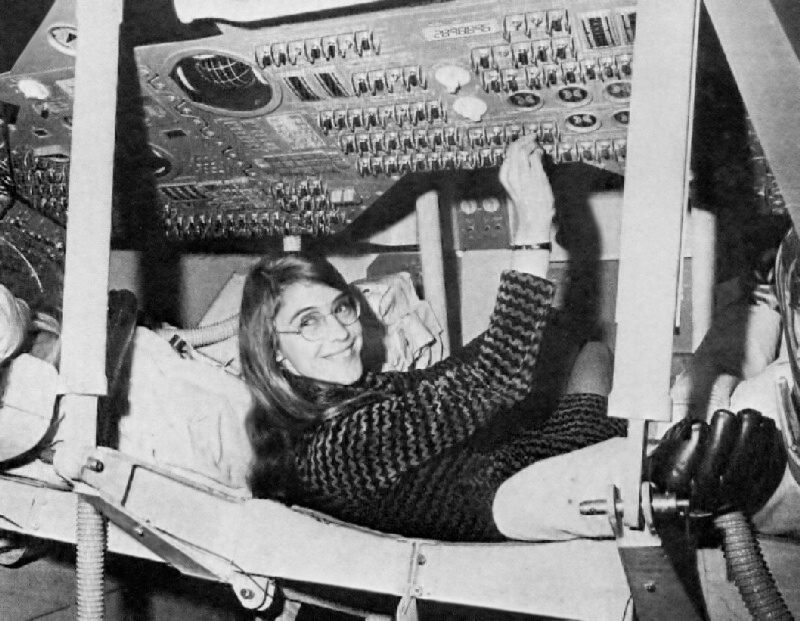Our society does a better, but still poor, job of promoting positive female role models. Most of our — let’s face it — male designed images of women fall into rather narrowly defined stereotypical categories: nurturing care-giver, stay-at-home soccer mom, matriarchal office admin, overly bossy middle-manager, vacuous reality-TV spouse or scantily clad vixen.
But every now and then the media seems to discover another unsung, female who made significant contributions in a male-dominated and male-overshadowed world. Take the case of computer scientist Margaret Hamilton — she developed on-board flight software for the Apollo space program while director of the Software Engineering Division of the MIT Instrumentation Laboratory. Aside from developing technology that put people on the Moon, she helped NASA understand the true power of software and the consequences of software-driven technology.
From Wired:
Margaret Hamilton wasn’t supposed to invent the modern concept of software and land men on the moon. It was 1960, not a time when women were encouraged to seek out high-powered technical work. Hamilton, a 24-year-old with an undergrad degree in mathematics, had gotten a job as a programmer at MIT, and the plan was for her to support her husband through his three-year stint at Harvard Law. After that, it would be her turn—she wanted a graduate degree in math.
But the Apollo space program came along. And Hamilton stayed in the lab to lead an epic feat of engineering that would help change the future of what was humanly—and digitally—possible.
As a working mother in the 1960s, Hamilton was unusual; but as a spaceship programmer, Hamilton was positively radical. Hamilton would bring her daughter Lauren by the lab on weekends and evenings. While 4-year-old Lauren slept on the floor of the office overlooking the Charles River, her mother programmed away, creating routines that would ultimately be added to the Apollo’s command module computer.
“People used to say to me, ‘How can you leave your daughter? How can you do this?’” Hamilton remembers. But she loved the arcane novelty of her job. She liked the camaraderie—the after-work drinks at the MIT faculty club; the geek jokes, like saying she was “going to branch left minus” around the hallway. Outsiders didn’t have a clue. But at the lab, she says, “I was one of the guys.”
Then, as now, “the guys” dominated tech and engineering. Like female coders in today’s diversity-challenged tech industry, Hamilton was an outlier. It might surprise today’s software makers that one of the founding fathers of their boys’ club was, in fact, a mother—and that should give them pause as they consider why the gender inequality of the Mad Men era persists to this day.
As Hamilton’s career got under way, the software world was on the verge of a giant leap, thanks to the Apollo program launched by John F. Kennedy in 1961. At the MIT Instrumentation Lab where Hamilton worked, she and her colleagues were inventing core ideas in computer programming as they wrote the code for the world’s first portable computer. She became an expert in systems programming and won important technical arguments. “When I first got into it, nobody knew what it was that we were doing. It was like the Wild West. There was no course in it. They didn’t teach it,” Hamilton says.
This was a decade before Microsoft and nearly 50 years before Marc Andreessen would observe that software is, in fact, “eating the world.” The world didn’t think much at all about software back in the early Apollo days. The original document laying out the engineering requirements of the Apollo mission didn’t even mention the word software, MIT aeronautics professor David Mindell writes in his book Digital Apollo. “Software was not included in the schedule, and it was not included in the budget.” Not at first, anyhow.
Read the entire story here.
Image: Margaret Hamilton during her time as lead Apollo flight software designer. Courtesy NASA. Public Domain.

